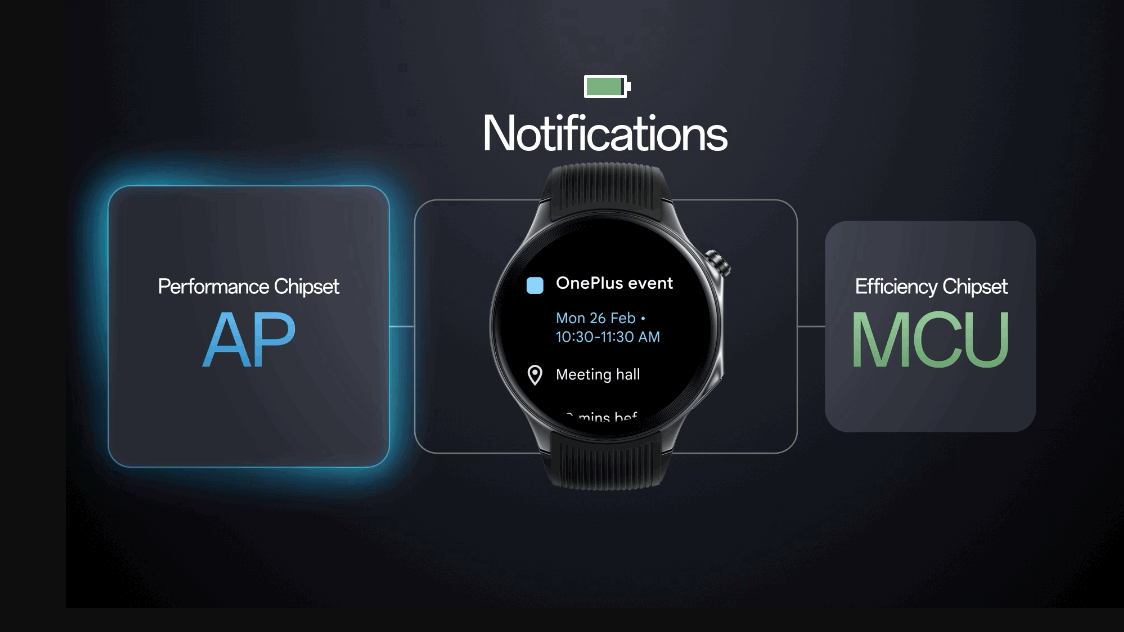What is the new Wear OS Hybrid Interface?
Google has finally made it easier for watchmakers to balance features with battery life.

Suddenly a new tech term is thrown around when discussing Wear OS, Google's smartwatch operating system: Hybrid Interface.
It's a fundamental change in the OS itself that promises to make a major difference in battery life, and early reports from the OnePlus Watch 2, which incorporates much of the changes, show that it works.
Better battery life for new watches is awesome. But how does it happen, and what exactly does Google mean by Hybrid Interface?
The Challenge: Balancing power and performance

Smartwatches are awesome little gadgets that offer a ton of functionality. But they do face a fundamental issue: how to pack powerful features and a good user experience into a tiny device without sacrificing battery life.
Other watches that don't use Wear OS can do it. Ask anyone who wears a Garmin smartwatch and they will tell you that 100+ hours of battery life is a real thing. Even Samsung's original Galaxy Watches, which used Samsung's in-house Tizen operating system, had battery life measured in days instead of hours.
Something had to give, and Google had to figure out a solution. That's where the Wear OS Hybrid Interface comes into play.
Two brains are better than one

The Wear OS Hybrid Interface is a clever software solution within Wear OS that intelligently manages the smartwatch's internal processors. The idea itself isn't new and you've been using a similar solution on your phone for years — a high-power chip does things when needed, and a lower-power chip handles everything it can.
Get the latest news from Android Central, your trusted companion in the world of Android
Many modern Wear OS smartwatches use a "dual-chipset architecture." This means they have a powerful main processor (Application Processor, or AP) alongside a low-power, secondary processor (often called a co-processor or Microcontroller Unit, MCU).
The hybrid interface acts like a smart switchboard, deciding which processor is best suited for a task. For demanding things like running apps, playing music, or showing complicated animations, the main processor kicks in. When the watch is handling simpler tasks like displaying the time, tracking steps, or showing basic notifications, the interface shifts the workload to the much more energy-efficient co-processor.
This is how Android works on your phone. Certain things need to be done fast so powerful processor cores jump in to handle them. Other things don't need a lot of power and high-efficiency cores can take care of them and use much less battery power to do it.
The beauty is this switching happens automatically and seamlessly. You don't have to fiddle with power modes or manually change settings. However, it required changes to the core operating system to happen. Google states it as such:
"The Wear OS hybrid interface enables intelligent switching between the MCU or the AP, allowing the AP to be suspended when not needed to preserve battery life. It helps, for instance, achieve more power-efficient experiences, like sensor data processing on the MCU while the AP is asleep. At the same time, the hybrid interface provides a seamless transition between these states, keeping a rich and premium user experience without jarring transitions between power modes."

That sounds like gobbledygook to many of us because Google likes to explain things for developers, who understand it perfectly. In essence, Google had to develop methods for the system to know when more power was needed and provide a way to hand off features to the right processor.
Your watch doesn't need to use a high-power AP to count steps or show you a notification. It does need more power to act upon these things, though. Wear OS APIs (Application Programming Interface) now do all the work and optimization. All a developer needs to do is, well, nothing — it works exactly as it did before from a software developer's point of view.
The onus is now on the company that made the watch itself. The right hardware needs to be used and any software customization done by the company who makes the watch needs to also adhere to the same principals.
We don't know the exact hardware requirements, but it's likely they aren't very demanding. A newer faster "high-power" AP isn't nearly as important as a proper co-processor(s) on a fast internal communication bus that can be managed through the kernel driver in some fashion.
We know OnePlus was able to integrate the new OS into the OnePlus Watch 2 in order to get a 100-hour battery life rating. I would wager that some of the watches we already use would be able to use the new Hybrid Interface while others can't, but it's unlikely that we'll see very many older watches fully embrace the changes.
Expect all newer watches to jump on board, though. Battery life is a benchmark that users do care about and it's worth the engineering time for companies like Samsung to incorporate anything that makes it better.
Many times we read promises about better battery life and things don't change. This probably isn't going to be one of those times and that seemingly simple idea should make a dramatic difference in how long your watch is on your wrist and not on the charger.

Jerry is an amateur woodworker and struggling shade tree mechanic. There's nothing he can't take apart, but many things he can't reassemble. You'll find him writing and speaking his loud opinion on Android Central and occasionally on Threads.
You must confirm your public display name before commenting
Please logout and then login again, you will then be prompted to enter your display name.
